 | Zdenka Sertić 1899-1986 studied painting in Zagreb, Berlin and Paris, and specialized in drawings related to Croatian folklore. From 1939 to 1941 directed the Ethnographic Museum in Zagreb. She painted some of the most beautiful Croatian postage stamps, and participated in exhibitions in Paris, Leipzig, Barcelona, Berlin, Kopenhagen, Haag and Bruxelles. She also painted several beautiful Easter greeting cards, that we show in this article. According to Dr. Vedran Deletis, NY, "Croatian glagolitic Lenten chants retrace a venerable and direct link to our ancestors, our roots, and our religious belief. Born out of Middle Ages, they continue to extend an unbroken tradition of Croatian history..." |
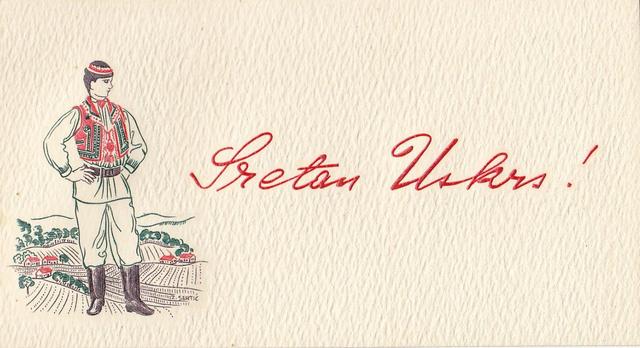
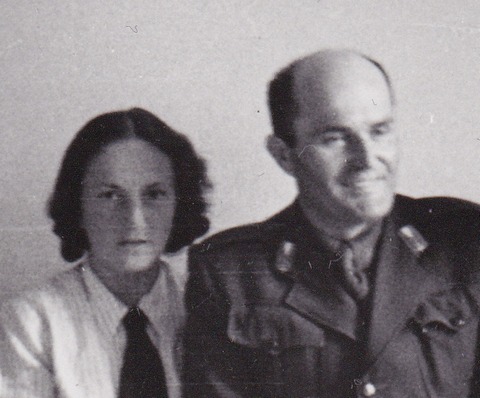
Zdenka Sertić and Tomislav Sertić in the 1940s.
| Zdenka Sertić 1899-1986 studied painting in Zagreb, Berlin and Paris, and specialized in drawings related to Croatian folklore. From 1939 to 1941 directed the Ethnographic Museum in Zagreb. She painted some of the most beautiful Croatian postage stamps, and participated in exhibitions in Paris, Leipzig, Barcelona, Berlin, Kopenhagen, Haag and Bruxelles. She also painted several bautiful Easter greeting cards, that we show in this article. |
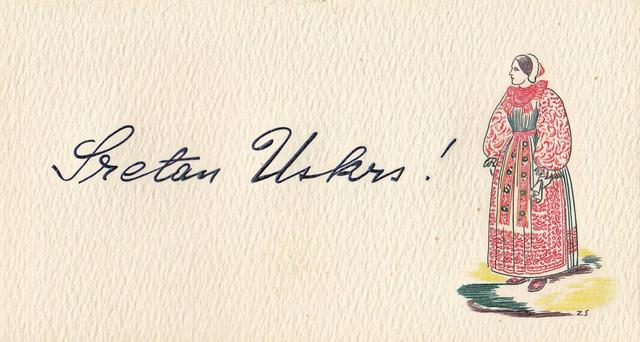
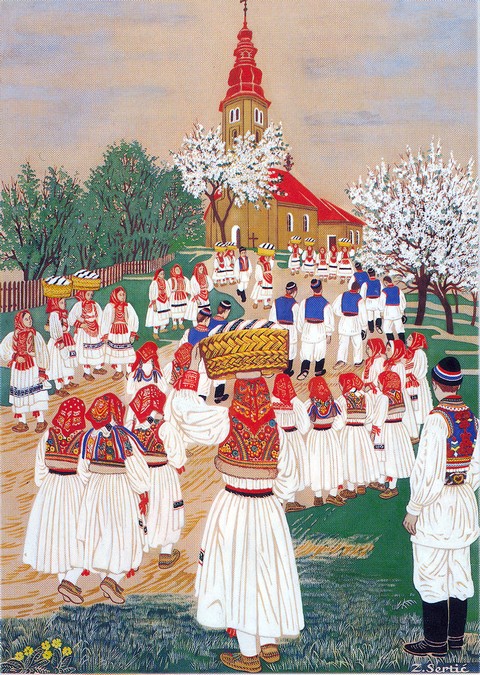
Many thanks to Dr. Mladen Ibler, Denmark, for sending me this beautiful photo.
Šestine is a small village, now a part of Croatia's capital Zagreb.
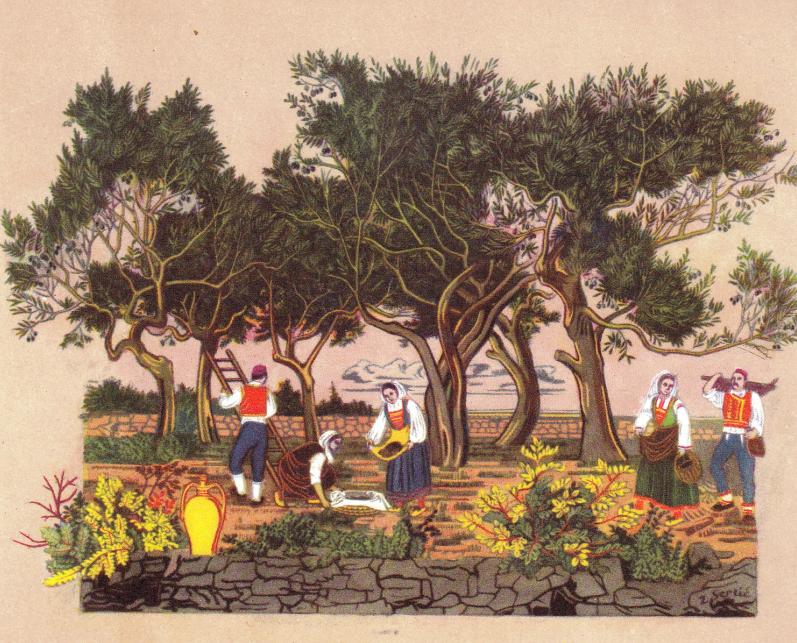
Zdenka Sertić: Branje maslina
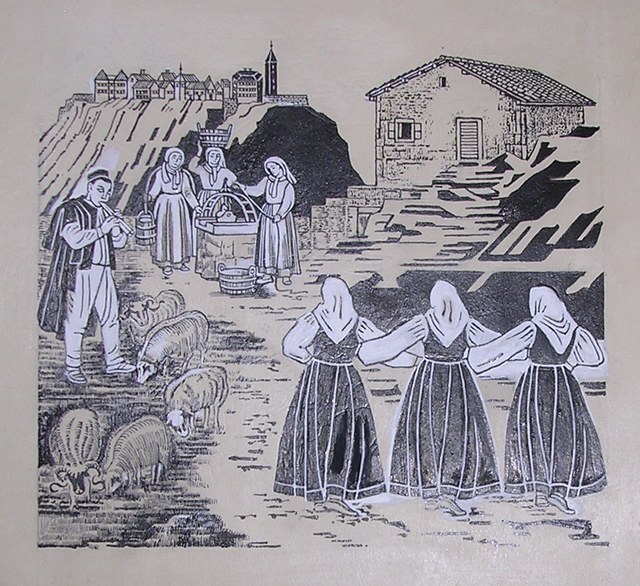
Zdenka Sertić: Motiv iz Istre
Zdenka Sertić je izvanredan grafičar i slikarica s profinjenim osjećajem za boje i sposobnošću fokusiranja detalja, tako da figurativnost u njezinim radovima djeluje kao da živi i buja svojim bogatstvom boja i ornamentike, dočim se tonovi boja pozadine slike izvanredno uklapaju u prirodni ambijent i godišnje doba. Izvor
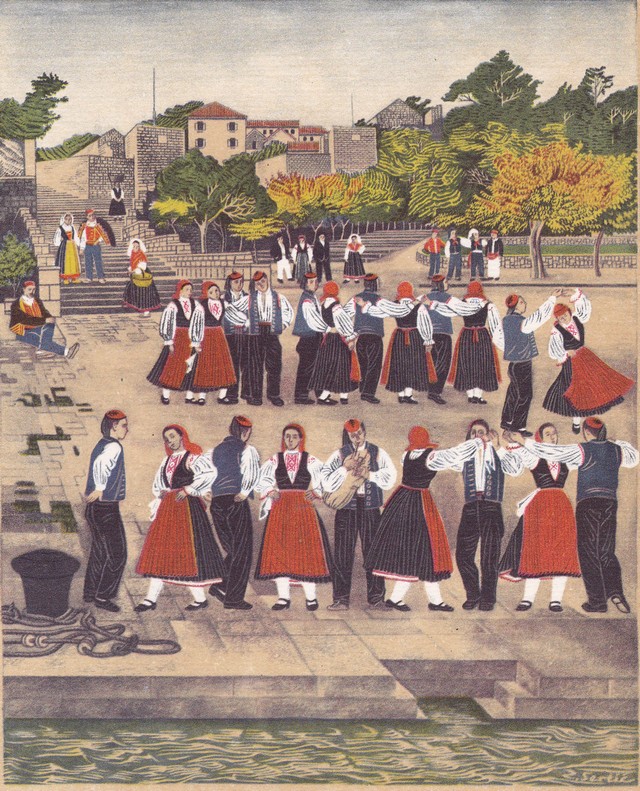
Zdenka Sertić: Primorski tanac
Pored slikarskog stvaranja, Zdenka Sertić izrađuje spomenice, diplome, plakate, ex- librise, osnovu za tkanine, kožu, keramiku i drvorezbariju. Izradila je emblem i prigodnu marku jubilarne proslave Zagrebačkog Sveučilišta 1969. godine, kao i nizove maraka s folklornim motivima 1957., 1961., i 1964. godine. Marka s prikazom makedonskog kola iz Skopske Crne Gore uvrštena je među deset najljepših maraka na svijetu za 1957.godinu (L.E. Scott, Stamp Collectors`Annual 1958). Izvor
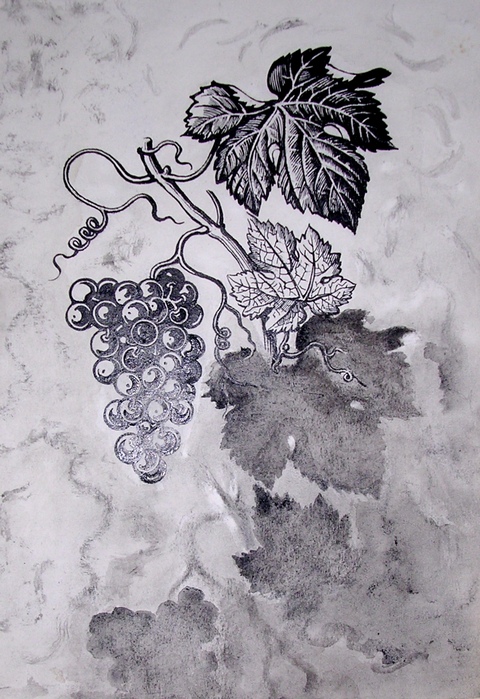
Zdenka Sertić: Vinova loza
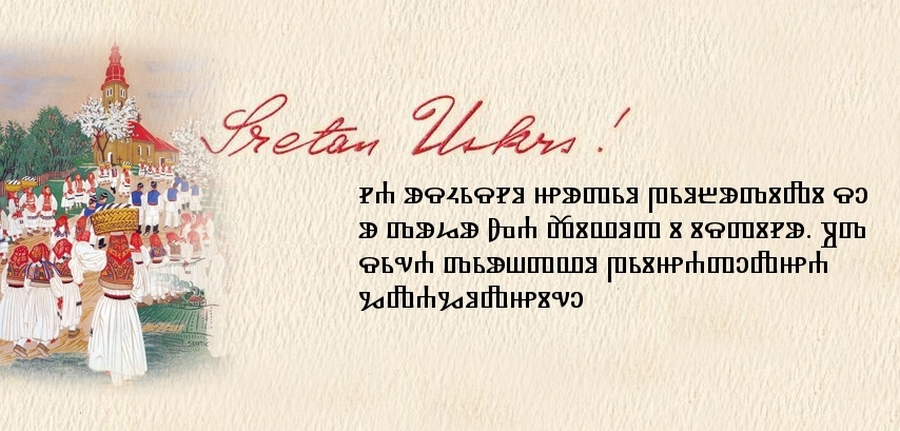
The Society of Lovers of the Glagolitic Script (Scripturae glagoliticae amicorum societas), Zagreb
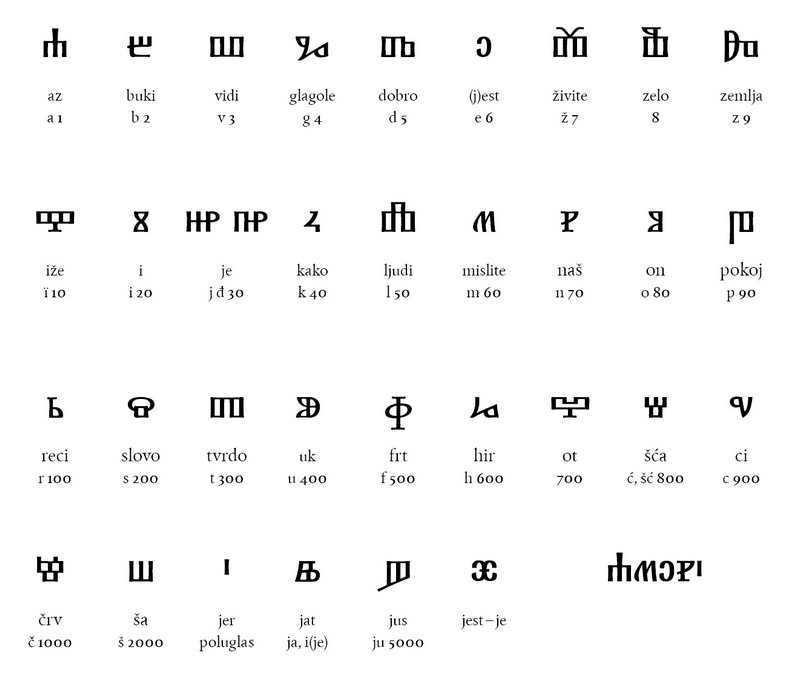
Rabi se u časopisu Bašćina koji objavljuje Društva prijatelja glagoljice. Glagoljički font izradio Filip Cvitić.
| Following the Cross on the island of Hvar in Croatia After mass on Maundy Thursday before the Christian holiday of Easter, each of six villages on the Dalmatian island of Hvar in southern Croatia sends out a group that will proceed through the other villages in a circle, covering twenty-five kilometres in eight hours before returning home. Each party in this community-organized Za Krizen (‘following the cross’) procession is led by a cross-bearer who walks barefoot or in socks, never resting. The cross-bearer, formerly selected from among religious brotherhoods and today chosen by registration up to twenty years in advance, has a much-desired and respected position, reflecting the devotion of the individual bearer and his family. He is followed by two friends with candelabra and others carrying candles and lanterns, five choral singers who sing the Lamentation of the Virgin Mary at several points along the way, and many worshippers of all ages from Croatia and abroad wearing the tunics of religious brotherhoods. The procession is greeted by the priests of each of the other five villages and returns home; the cross-bearer runs the last hundred metres to receive the blessing of his home priest. A long-established and inalienable part of Hvar religious and cultural identity, the procession connects the communities of the island to each other and to the world Catholic community. Source www.unesco.org |
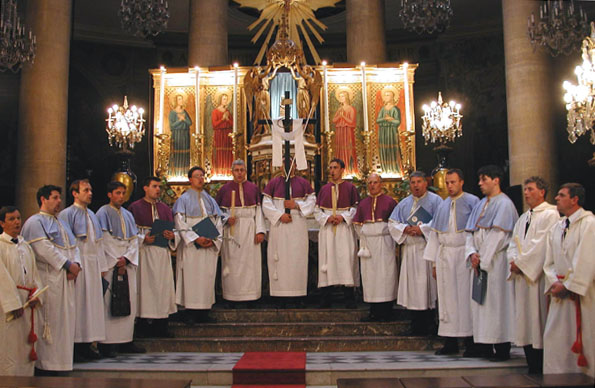
Gospin plač [mp3] u izvedbi znamenitih Hvarskih korizmenih pjevača iz Vrbanja.
The Passion procession on Croatian islands (like on Hvar for instance) has centuries old tradition with its roots in the Middle Ages. Passion processions are not organized by the Church or priests, but by laity, i.e. by confraternities of villagers. Musicologists consider passion songs in Croatia among the oldest in Europe. Each spring a festival of Croatian passion heritage (Pasionska baština) is held in Zagreb. Its symbol is glagolitic letter A. In 1985 Maestro Ljubo Stipišić issued 8 cassettes representing Old Church (Glagolitic) folk songs from 15 places on the island of Hvar. These are records of very old tradition.
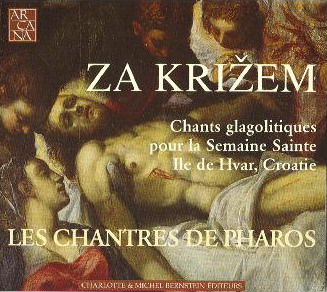
Les chantres de Pharos: Chants glagolitiques pour la Semaine Sainte
Ile de Hvar, Croatie
ZA KRIZEM: Glagolitic chant for Holy Week from Hvar, Croatia
The Pharos Cantors, recorded in June 1999 in Stari Grad, Hvar, Croatia
produced by Nenad Bach
These Croatian glagolitic Lenten chants retrace a venerable and direct link to our ancestors, our roots, and our religious belief. Born out of Middle Ages, they continue to extend an unbroken tradition of Croatian history. They still resonate as part of our being, so let them be our pride, our support, and our hope.Dr. Vedran Deletis, New York
The Pharos Cantors (Hvarski kantaduri) sang their very old Lenten chants in Czechia, Great Britain, Bosnia and Herzegovina, Hungary, Germany, Spain, the USA, the Netherlands, Austria, etc.
Examples:
- Gospin plač - Madonna's weeping (Stabat mater dolorosa) [mp3]. Prema dr. Mihi Demoviću, ovaj način pjevanja ima neke pralele s koptskim pjevanjem.
- Tebe Boga hvalimo (Te Deum) [wma]
Formated for CROWN by Darko Žubrinić
Distributed by www.Croatia.org . This message is intended for Croatian Associations/Institutions and their Friends in Croatia and in the World. The opinions/articles expressed on this list do not reflect personal opinions of the moderator. If the reader of this message is not the intended recipient, please delete or destroy all copies of this communication and please, let us know!